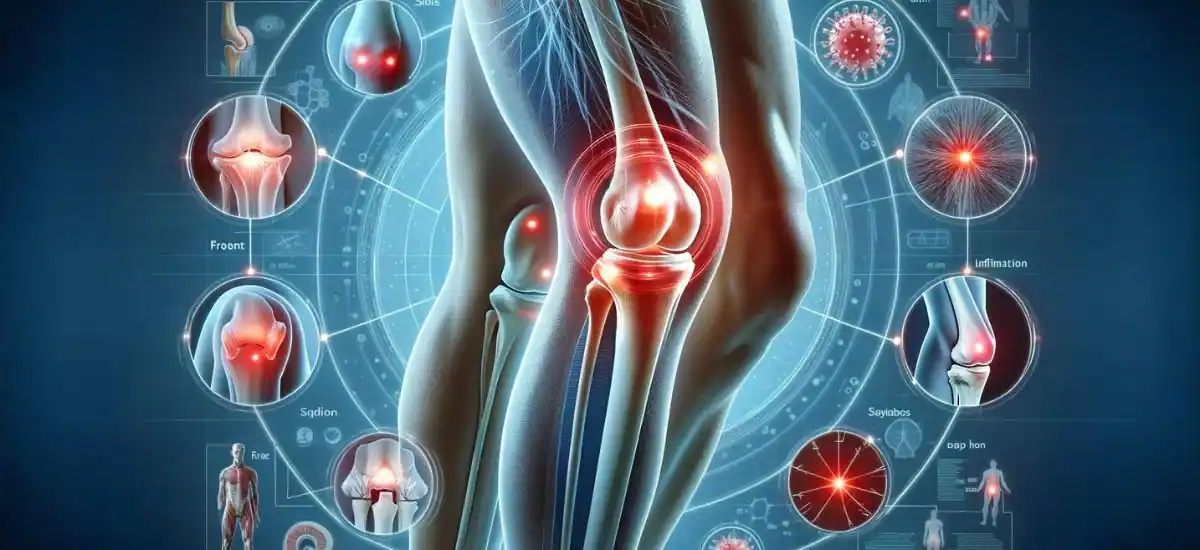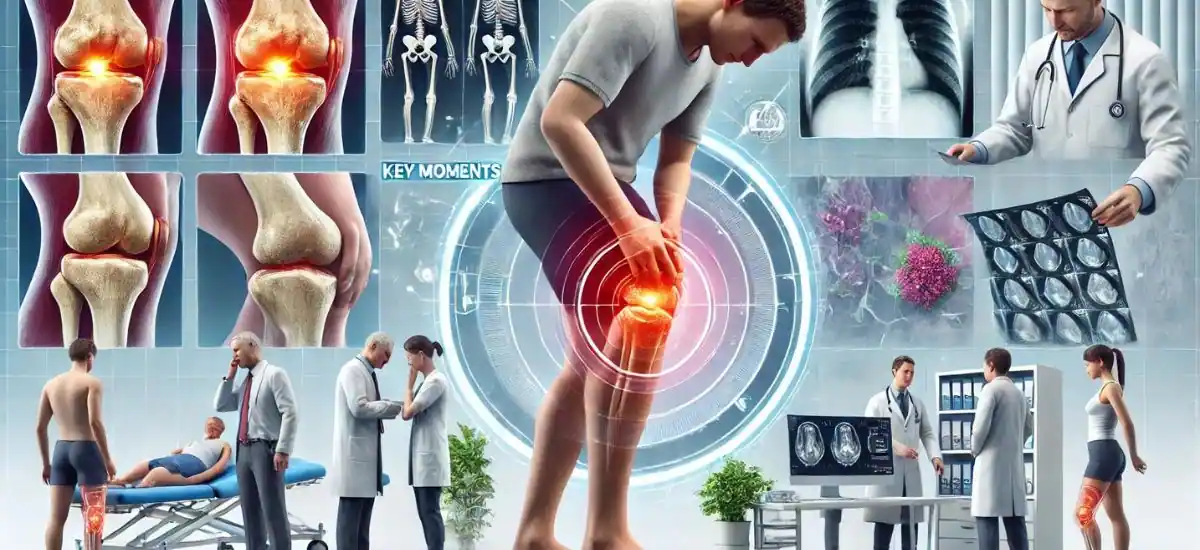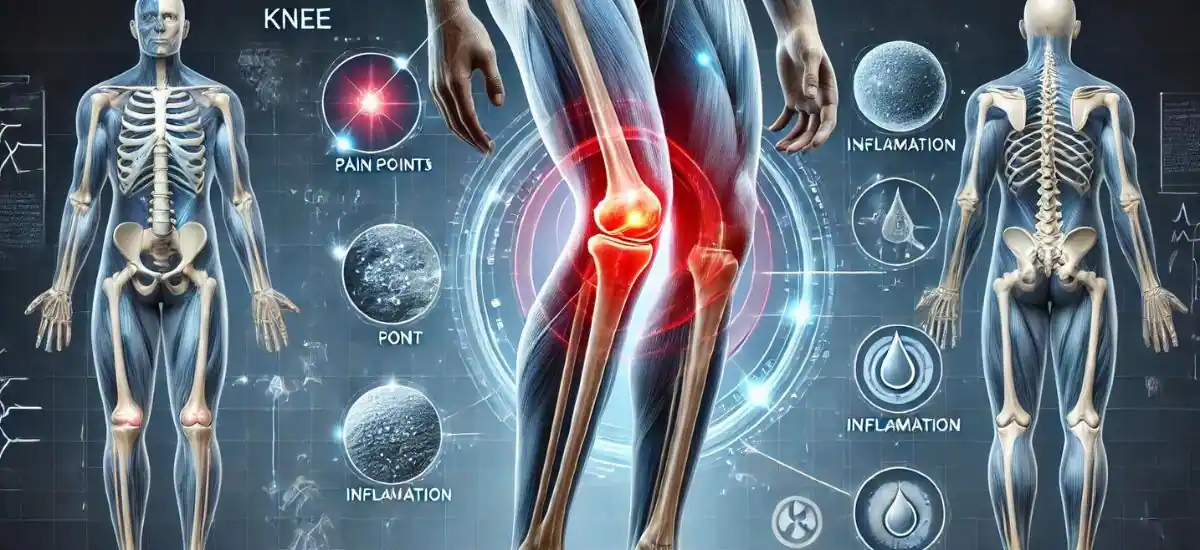Symptoms of knee pain include sharp or dull discomfort, swelling, stiffness, redness, and warmth around the knee. These symptoms often intensify during physical activities and after periods of inactivity. More severe symptoms, such as inability to fully extend the knee and unusual sounds like clicking or popping, may indicate serious conditions. Recognizing and addressing these symptoms promptly is key to effective treatment.
Common Symptoms of Knee Pain

Knee pain isn’t just discomfort; it’s a signal from your body that something’s up. Here are the main symptoms to watch out for:
- General Discomfort: Your knee might hurt in a nagging, dull way or with sharp, intense pains that make daily tasks challenging.
- Swelling and Stiffness: If your knee looks swollen or feels stiff, especially after you’ve been sitting for a while or first thing in the morning, it’s a clear sign of trouble.
- Redness and Warmth: A knee that’s red and feels warm is inflamed. Think of it as a red flag that your body is trying to get your attention.
Specific Symptoms Related to Activities
Your knee might also complain during certain activities:
- Pain During Movement: Walking, running, or climbing stairs can trigger pain if something’s wrong with your knee.
- Pain After Inactivity: Standing up after sitting through a long movie and feeling knee pain? That’s your knee’s way of saying it’s not happy.
- Pain Associated with Weight-Bearing: If your knee hurts when you stand up or put weight on it, it’s a sign that your knee needs some TLC.
Symptoms Indicating Serious Conditions
Sometimes, knee pain is more than just an inconvenience; it can signal a serious problem that needs immediate attention. Keep an eye out for these warning signs:
- Severe Swelling and Redness: If your knee swells up like a balloon and looks redder than a ripe tomato, it could indicate a serious issue such as an infection or gout.
- Inability to Fully Extend the Knee: Trouble straightening your knee fully? This limitation can be due to a severe injury or mechanical blockage inside the joint.
- Sounds from the Knee: Noises like clicking, popping, or grinding are more than just weird; they can suggest problems with the cartilage or misalignment of knee components.
Differential Diagnosis Based on Symptoms
Knee pain isn’t a one-size-fits-all issue. Depending on the exact symptoms and their onset, different conditions might be at play:
- Osteoarthritis: Typically involves joint stiffness, swelling, and a gradual increase in pain, becoming worse after activity.
- Tendonitis: Often presents as pain localized around the knee, especially aggravated by moving the knee against resistance.
- Bursitis: Look for swelling, warmth, and pain predominantly on the inside or front of the knee.
- Meniscus Tear or Ligament Injury: Sharp, severe pain, often with a popping sensation at the time of injury, followed by swelling and difficulty moving the knee.
When to Seek Medical Attention

It’s crucial to know when to call a professional about your knee pain. Here’s when you should consider booking an appointment:
- Persistent Pain: If your knee pain doesn’t improve with rest and over-the-counter pain relievers, it’s time to see a doctor.
- Debilitating Symptoms: Pain that’s bad enough to prevent you from doing your usual activities is a clear signal to get medical help.
- Signs of Infection: Fever, excessive swelling, redness, and warmth around the knee are urgent symptoms that require immediate medical attention.
Preventive Measures and Early Care Tips
Taking steps to prevent knee pain is just as important as knowing how to treat it. Here are some proactive tips to keep your knees healthy:
- Routine Exercises and Stretching: Engage in low-impact exercises like swimming or cycling, which strengthen your leg muscles without putting too much strain on your knees. Regular stretching can also help maintain flexibility and reduce tension in the knee area.
- Diet and Nutrition: Incorporating foods rich in omega-3 fatty acids, calcium, and vitamin D can support joint health. Consider adding fish, leafy greens, and dairy products to your diet to help fortify your knees.
- Proper Footwear and Ergonomics: Wearing shoes that provide good support and fit well can significantly reduce knee stress. If your job requires you to stand for long periods, consider using supportive mats and maintaining a posture that reduces knee strain.
Conclusion
Knee pain can range from a minor nuisance to a significant hindrance, but understanding its symptoms is the first step toward recovery. By recognizing when knee pain is more than just a temporary ache and knowing when to seek professional advice, you can take control of your health and steer clear of more severe issues. Remember, proactive measures like routine exercise, a healthy diet, and proper footwear are your best defense against knee problems. Stay active, stay informed, and don’t let knee pain slow you down.


